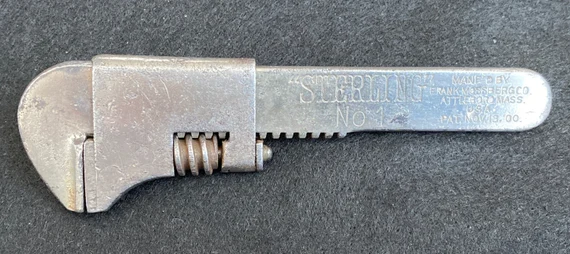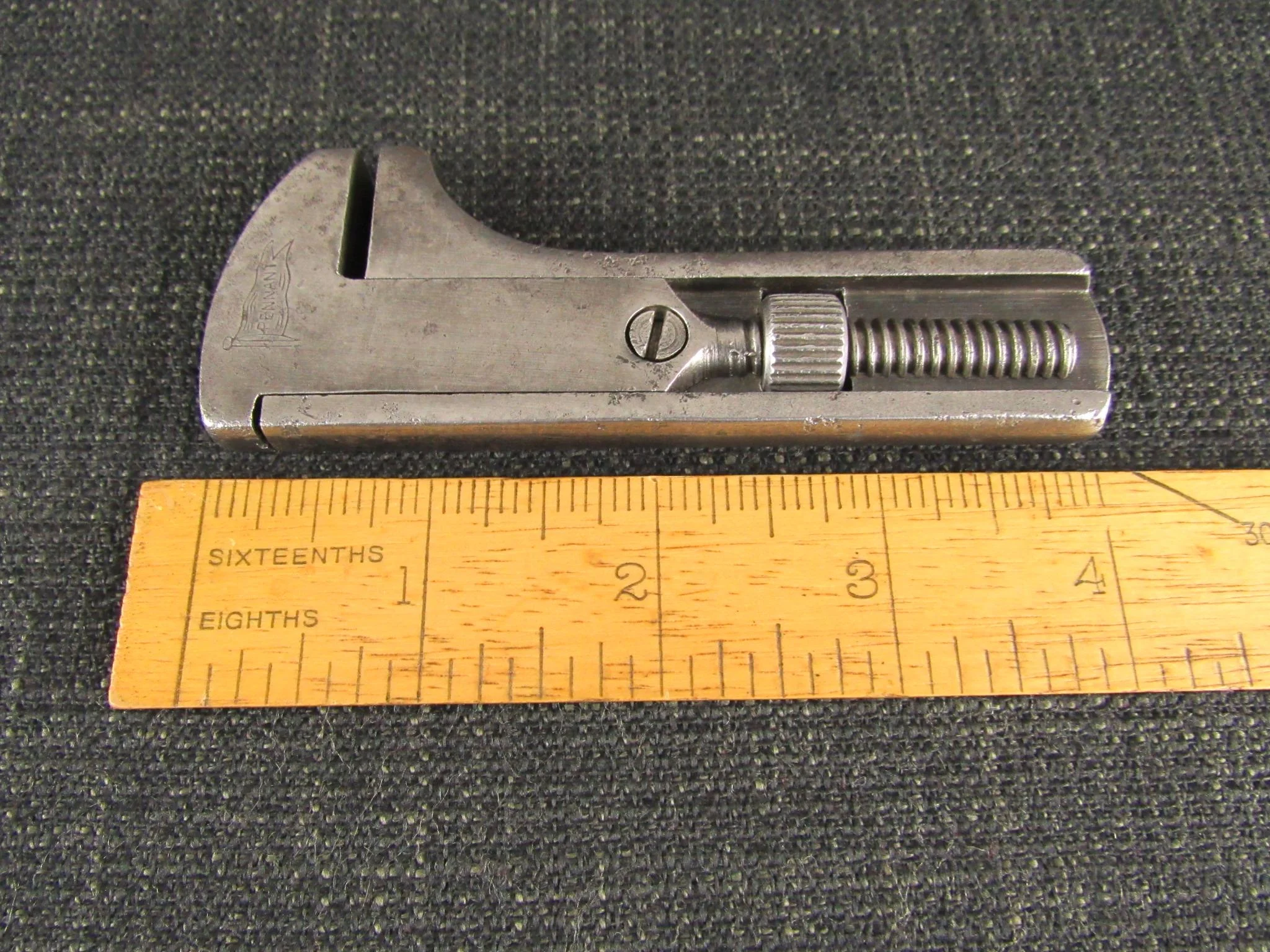The vintage adjustable wrench is more than a mere tool—it’s a relic of innovation, craftsmanship, and the resilient spirit of early cyclists. Patented by Swedish inventor Johan Petter Johansson in the late 19th century, this unassuming yet essential device became a must-have for cyclists during the golden age of cycling. It wasn’t just a tool; it was a reliable companion that played a vital role in keeping riders on the road and their bicycles in top condition.
Let’s delve into how this tool transformed cycling, leaving a lasting legacy that continues to influence mechanics and collectors alike.
The Birth of the Adjustable Wrench: A Revolutionary Invention

In 1891, Johan Petter Johansson, a Swedish inventor with a penchant for practicality, patented the adjustable wrench—a tool designed to adjust to various nut and bolt sizes with a single mechanism. This was a groundbreaking innovation for mechanics and cyclists alike. Before its invention, riders had to carry multiple tools or heavy toolboxes to handle different repair needs.
Johansson’s design introduced simplicity and efficiency, making the wrench indispensable to early cyclists who often embarked on long journeys with minimal supplies. It wasn’t just about convenience—it was about survival. If a chain came loose or a bolt needed tightening miles away from the nearest town, the adjustable wrench provided the solution right in the rider’s pocket.
Why the Adjustable Wrench Became Essential for Cyclists
During the late 19th and early 20th centuries, cycling was more than a sport or hobby—it was a means of exploration and independence. But the bicycles of that era were prone to mechanical failures. Riders often faced challenges like loose bolts, wobbly wheels, or saddle adjustments that needed quick fixes.
The adjustable wrench became the ultimate problem-solver for these early cyclists. It allowed them to:
- Adjust saddle heights: Proper saddle height was crucial for comfort and performance, especially on long rides.
- Tighten frame bolts: Loose bolts could make a bicycle unstable, potentially leading to accidents.
- Fix wobbly wheels: Ensuring wheel security was vital to maintain balance and avoid crashes.
The wrench’s versatility made it the go-to tool for nearly every mechanical issue cyclists encountered. This adaptability saved time, energy, and, in some cases, even prevented serious injuries.
How the Wrench Contributed to Cycling Safety
Safety was a significant concern for early cyclists, as paved roads were scarce, and bikes weren’t as reliable as modern designs. Mechanical failures could lead to accidents, injuries, or being stranded in remote areas. The adjustable wrench’s role in addressing these problems made it a literal lifesaver.
By enabling quick fixes, this tool allowed riders to confidently tackle long-distance journeys, knowing they had a reliable means to handle unexpected repairs. The wrench wasn’t just a tool; it was peace of mind wrapped in metal—a compact guardian against the unpredictabilities of the road.
The Legacy of the Vintage Adjustable Wrench
The impact of the vintage adjustable wrench extends far beyond the golden era of cycling. It set the foundation for modern adjustable wrenches, which are still a staple in toolboxes worldwide. Today’s versions may be sleeker, lighter, and more refined, but the core principles remain the same: adaptability, durability, and practicality.
For collectors, the vintage wrench is more than a functional tool—it’s a piece of history. These antique wrenches are treasured not only for their utility but also for their historical significance. They symbolize a time when necessity drove innovation, and when cyclists were pioneers navigating the unknown with little more than their determination, skill, and a trusty wrench.
The Vintage Adjustable Wrench as a Collector’s Gem
For tool collectors and cycling enthusiasts, vintage adjustable wrenches hold immense sentimental and historical value. These tools are often meticulously restored, polished, and preserved as artifacts of a bygone era. Collectors appreciate their craftsmanship, which often features intricate engravings, unique handle designs, and patinas that speak to years of use.
The wrench’s appeal to collectors lies in its:
- Historical significance: It represents an era when cycling was emerging as a major mode of transportation and recreation.
- Durable craftsmanship: Unlike many modern tools, vintage wrenches were built to last, with high-quality materials that have withstood the test of time.
- Symbol of innovation: As a pioneer of multi-use tools, the adjustable wrench is a testament to the creativity and resourcefulness of past generations.
These collectors are not just preserving a tool; they are preserving a legacy—a reminder of how a simple invention can have a profound impact on an entire movement.
Modern-Day Relevance of the Vintage Adjustable Wrench

Even in today’s world of high-tech tools and advanced bicycles, the adjustable wrench remains relevant. Its basic design is still useful for modern cyclists, especially those who appreciate traditional craftsmanship or engage in vintage cycling events.
Additionally, mechanics continue to use adjustable wrenches for a range of tasks. While newer, specialized tools have emerged, the versatility of this classic tool keeps it indispensable in workshops and garages around the globe.
Why the Adjustable Wrench Endures as a Symbol of Ingenuity
The vintage adjustable wrench is more than a tool—it’s a story. It’s the tale of an era when cyclists braved rough roads and mechanical failures, armed with nothing more than their spirit of adventure and a trusty wrench. It represents ingenuity, resourcefulness, and the pursuit of freedom on two wheels.
The enduring appeal of this simple tool is rooted in its ability to adapt, solve problems, and empower riders. It’s a symbol of how innovation can transform experiences and how a single invention can leave an indelible mark on history.
Conclusion: A Tool That Stands the Test of Time
The vintage adjustable wrench is not just a tool from cycling’s golden era; it’s a testament to human creativity and resilience. It played a vital role in shaping early cycling, offering cyclists a means to conquer challenges, ensure safety, and embrace the open road with confidence.
From its birth in the hands of Johan Petter Johansson to its place in modern collections, this timeless tool continues to inspire and captivate. Whether you’re a cyclist, a mechanic, or a collector, the vintage adjustable wrench serves as a reminder that sometimes, the simplest tools have the most profound impact. It’s a legacy of innovation, adaptability, and a passion for the ride—no matter where the road leads.


